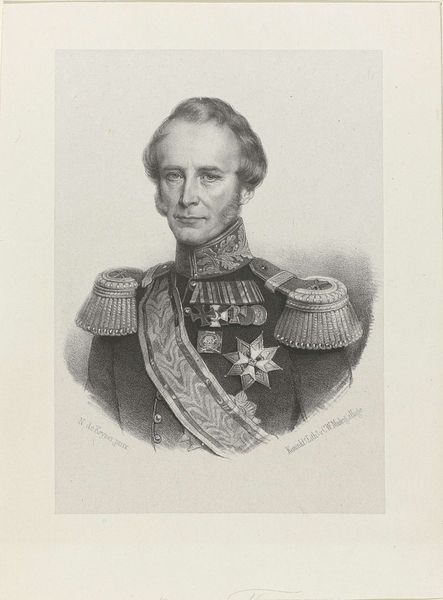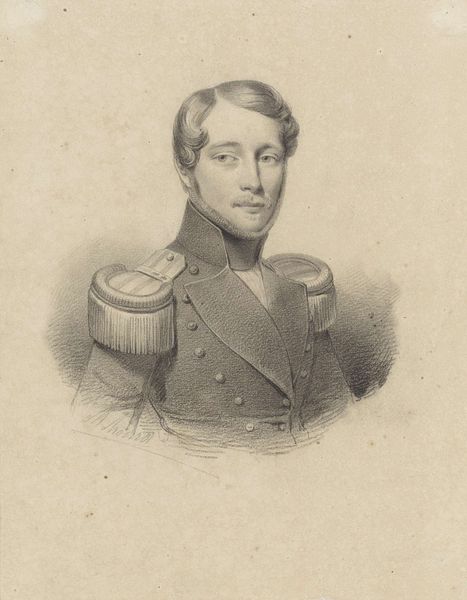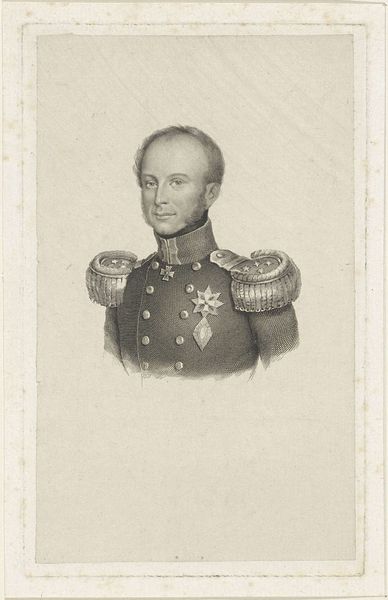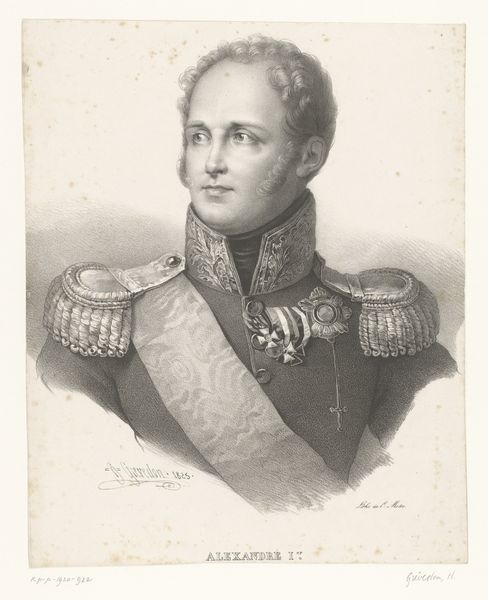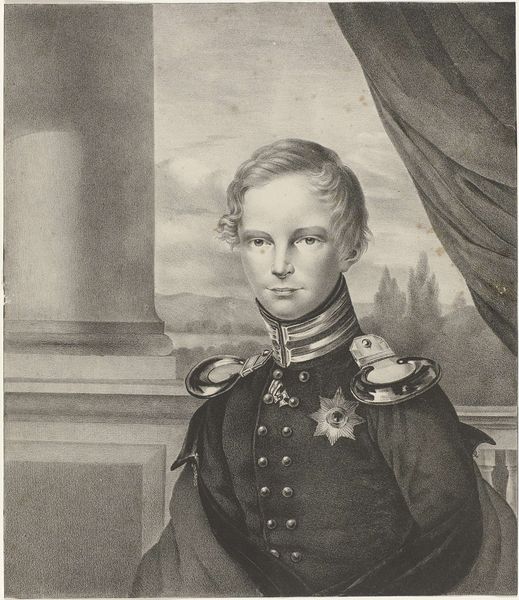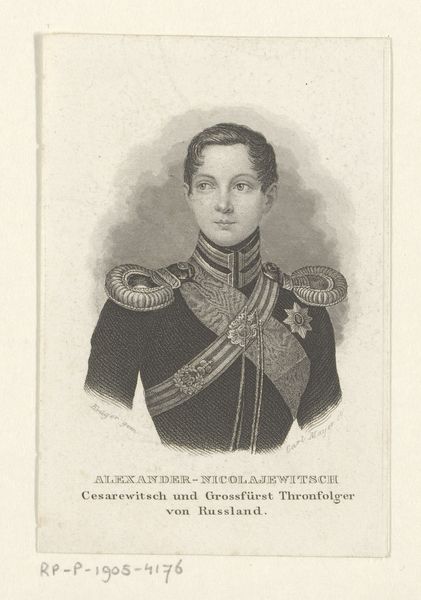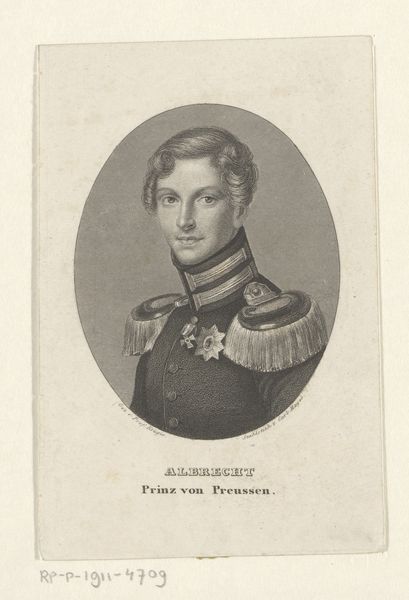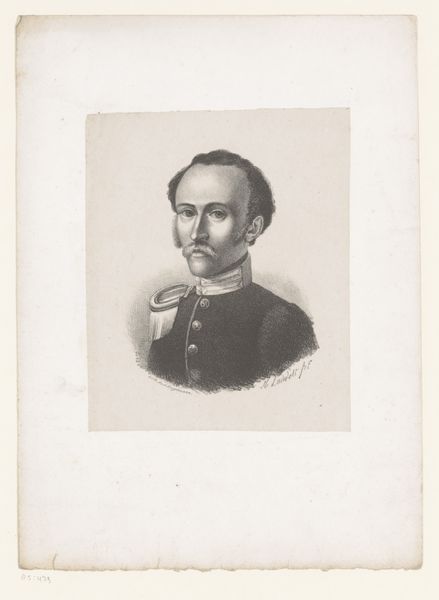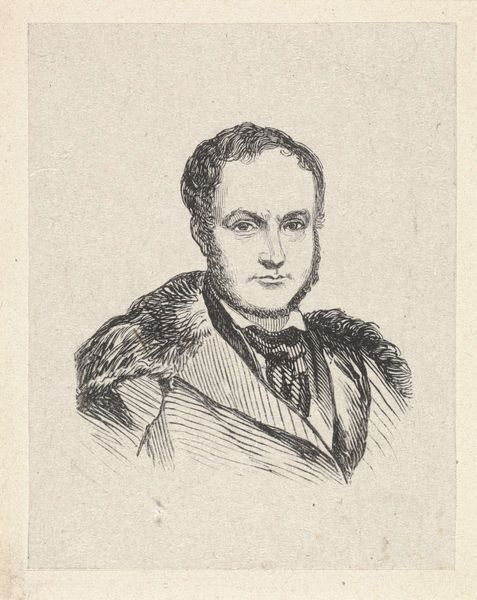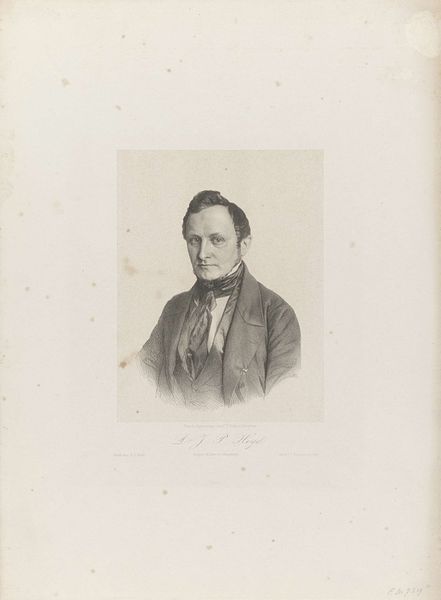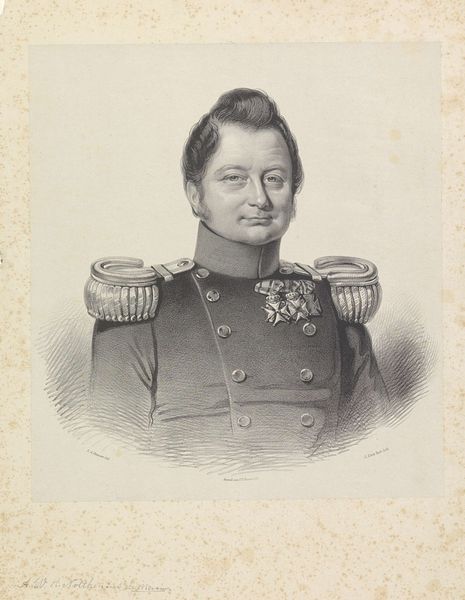
Dimensions: height 147 mm, width 90 mm
Copyright: Rijks Museum: Open Domain
Editor: Here we have an anonymous portrait of Willem, Prince of the Netherlands, created sometime between 1845 and 1899. It’s a pencil drawing, and it's quite striking how formal and posed he appears. How would you interpret this work? Curator: Let's consider the context: a royal portrait rendered in pencil. Pencil, unlike oil paint, suggests accessibility and a certain democratizing of image-making, even in the late 19th century. Yet, the military garb immediately reinscribes class and power. What labor went into producing the paper? What social strata consumed images like this, and why? These are interesting points to note. Editor: That's a very interesting point. It also highlights the contrast between the relatively inexpensive materials, like pencil and paper, and the powerful figure being depicted. Curator: Exactly! How does this impact our reading? Were such drawings circulated widely? Was this perhaps a preparatory sketch for a more “official” portrait in paint destined for display in the homes of loyal and wealthy subjects? Pencil introduces questions about reproduction, distribution, and value that a grand oil painting simply wouldn’t. It pushes us to consider artistic intention as well. Editor: I hadn't considered it that way. So, looking beyond the Prince himself, we can consider the role that portraits like this played in constructing and maintaining social hierarchies. Curator: Precisely. We can examine the paper and pencil as technologies that disseminate specific images. Think about who had access to these materials and who controlled the narrative around Prince Willem. Editor: That’s a great insight; looking at the materials brings up so many previously unseen considerations. Curator: Indeed. Material analysis isn't just about the object; it's about the forces of production, the networks of consumption, and the politics of representation at play.
Comments
No comments
Be the first to comment and join the conversation on the ultimate creative platform.

